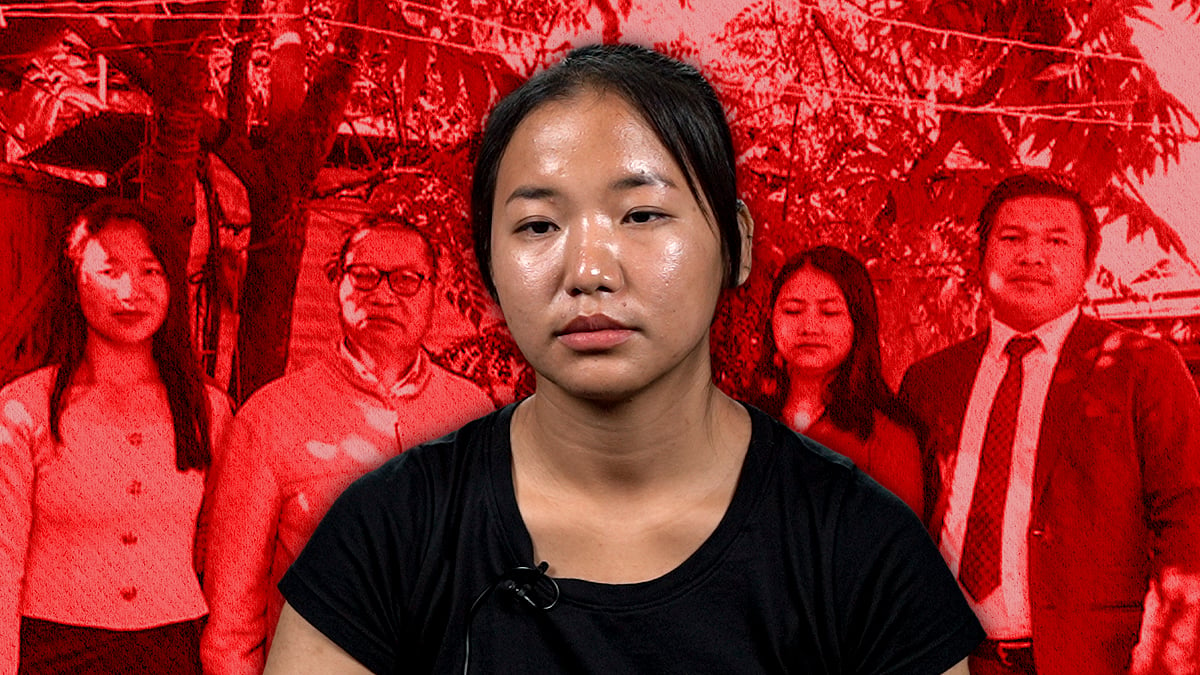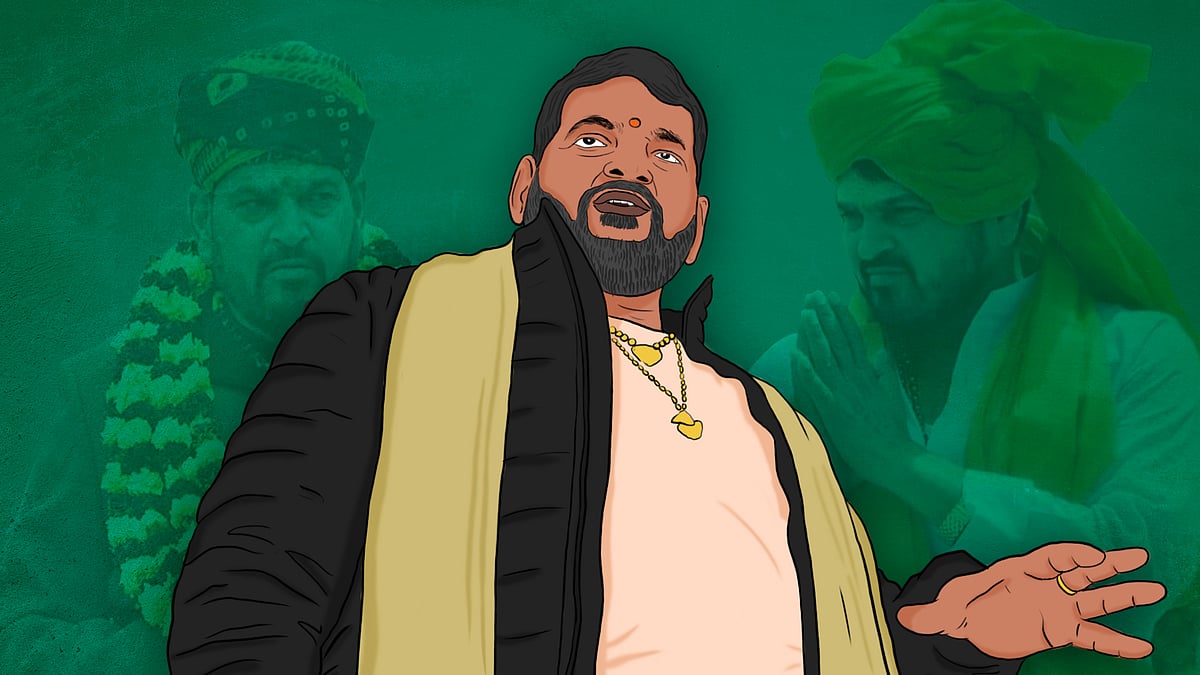Manipur simmers, champions protest, but Modi's focus is on his new Parliament
The contrast tells the story, and even Amit Shah’s rush to Manipur brings more grief than consolation.
We have witnessed a fortnight of high drama. The contrasting images – of the prime minister of a secular country walking into a new Parliament building accompanied by saffron-clad Hindu priests even as award-winning women wrestlers literally wrestled with the police to assert their right to protest – were riveting.
One image told us that the concept of a secular state is now history. And the other, that in the new version of ‘democracy’, there is no room for protest or dissent. They also depicted where India is as a country today as captured by the Mumbai-based newspaper Mid-Day.
The images also spoke to another reality: that one of India’s most voluble prime ministers cannot find a word to say to women demanding action against one of his powerful satraps on charges of sexual harassment.
This even after widespread coverage of the protest in the international media, and the statement made by the International Olympic Committee which says: “The treatment of the Indian wrestling athletes over the weekend was very disturbing. The IOC insists that the allegations by the wrestlers are followed up on by an unbiased, criminal investigation in line with local law.”
Ever since the wrestlers began their sit-in at Jantar Mantar, their protest has received widespread coverage, and strong comment in editorials and op-eds. In my view, one of the best commentaries is by leading sports journalist Sharda Ugra. It is a must read because it gives us a better sense of these women who have excelled in a non-traditional sport like wrestling. It also goes beyond the bare details of the protest to help us understand where these women are coming from, what they have endured, and why they know bad touch from good touch.
Ugra writes that as “elite” athletes, “they have a far better knowledge of human anatomy and physiology than anyone pushing them around. They know how to exert pressure and use weight, maintain balance, use force, inflict and absorb pain. During their protest, the wrestlers have absorbed pain in many forms but chose not to inflict any.”
And she concludes with these powerful words: “India’s protesting women wrestlers have lived and worked with complex contradictions: their sport requires physical hyper-awareness, response and aggression from bodies policed through unyielding boundaries of honour and shame from a young age. At the very least, it should be through sport that these boundaries are crushed into the ground. Not by the police or by political policing.”
If after this you read the details in the FIRs that the Delhi police has finally filed on the basis of the complaints of sexual harassment by six adult women wrestlers and the father of a minor against Brij Bhushan Sharan Singh, you will understand better what they are saying.
At the time of writing this column, there is a momentary pause in the protest as a five-day ultimatum has been served to the government by leaders of khap panchayats to move against Singh. Failing this, the protesting wrestlers will once again go to Haridwar, as they did on May 29, and immerse their hard-won medals and trophies in the Ganga river.
While these dramatic events were unfolding in Delhi, the seat of political power and the home of the national media, lurking in the shadows were the images of a state literally burning. The state of Manipur in northeast India has been caught in a cauldron on ethnic strife from May 3. Some of it has been reported. For the details you need to search independent platforms, especially those based in the region.
Yet, it took India’s home minister Amit Shah 24 days before he finally made a statement, and that too from Guwahati, a short flight from Imphal, the capital of Manipur. What he said would have caused more grief than consolation to the troubled people of Manipur. He insisted that the trouble was due to the March 27 ruling of the Manipur High Court granting Scheduled Tribe status to the Meitei, who are the majority in the state. The ruling has since been challenged.
The home minister should have known better. Nothing is so simple in the northeast or, for that matter, anywhere else in India. But especially in the northeast, a region where each state has a complex history, multiple cultures, tribes, dialects, and faiths. The heavy hand of Delhi has been a constant presence, in the form of the security forces backed by the Armed Forces Special Powers Act. For decades, residents of these states have manoeuvred around this constant, and often ugly, reality. To dismiss the ongoing violence as the outcome of one court ruling indicates a serious deficit in Delhi’s understanding of the region. It reinforces the feeling of many ordinary people in the region that the “mainland” and Delhi do not care.
As any journalist from the “mainland” who has reported from a northeastern state would know, there are few simple answers to be found to the problems or the conflicts in the region. The best that we can do is to listen to all sides, especially ordinary people instead of just the “authorities”, and report as honestly as we can without judgement. We can also use the chance to understand, at least a little bit, about the history and the distinctive culture of the region.
There have been several reports and articles that have attempted this kind of sensitivity. More often than not, these reports are written by someone from the region, and there are many excellent local journalists in every northeastern state. At times like this, the mainstream media ought to turn to this excellent, well-trained resource instead of parachuting journalists who may not have an adequate understanding of the region.
Take, for instance, this piece in Article-14 by Kimi Colney, a journalist based in Mizoram. It gives us a flavour of what ordinary people have suffered on both sides while at the same time placing in perspective the history of the tensions between the majority Meitei, who make up 53 percent of the population of 3.3 million, and the minority tribal groups that include the Kuki. It is worth taking the time to read this long article to get a fuller picture of the current conflagration in the state.
Interestingly, Colney also reports that people in Manipur are wondering why the prime minister is silent. She quotes Babloo Loitangbam, director of advocacy group Human Rights Alert: “What is most surprising is that till date the double engine government of Modiji (a reference to BJP governments in Imphal and New Delhi) has not made a statement on what is happening today...The honourable PM does not have five minutes to spare and make a statement, this is very strange.”
In all conflicts, there is a trigger, but behind it is a long history that needs to be understood and acknowledged. Anyone with even a perfunctory understanding of the region would know that you cannot simply blame a high court ruling for the current violence in Manipur.
Unfortunately, those in power at the centre, or even in the state, appear not to care about this, thereby aggravating the hurt and the frustration of the ordinary people of Manipur, both Meitei and Kuki, who are caught in the violence. An imposed peace from Delhi will not erase the history of mistrust that lies at the root of the current violence.
Update at 11.30 am, June 3: The FIRs contain allegations against Singh by seven wrestlers, including a minor, not 10 wrestlers. This has been corrected.
 ‘Can still feel the blows...Imphal murdered my family’: Manipur violence survivor recalls escape
‘Can still feel the blows...Imphal murdered my family’: Manipur violence survivor recalls escape  ‘Baahubali’, braggart, all-round bigwig: Why WFI chief Brij Bhushan Singh thinks he’s above the law
‘Baahubali’, braggart, all-round bigwig: Why WFI chief Brij Bhushan Singh thinks he’s above the law